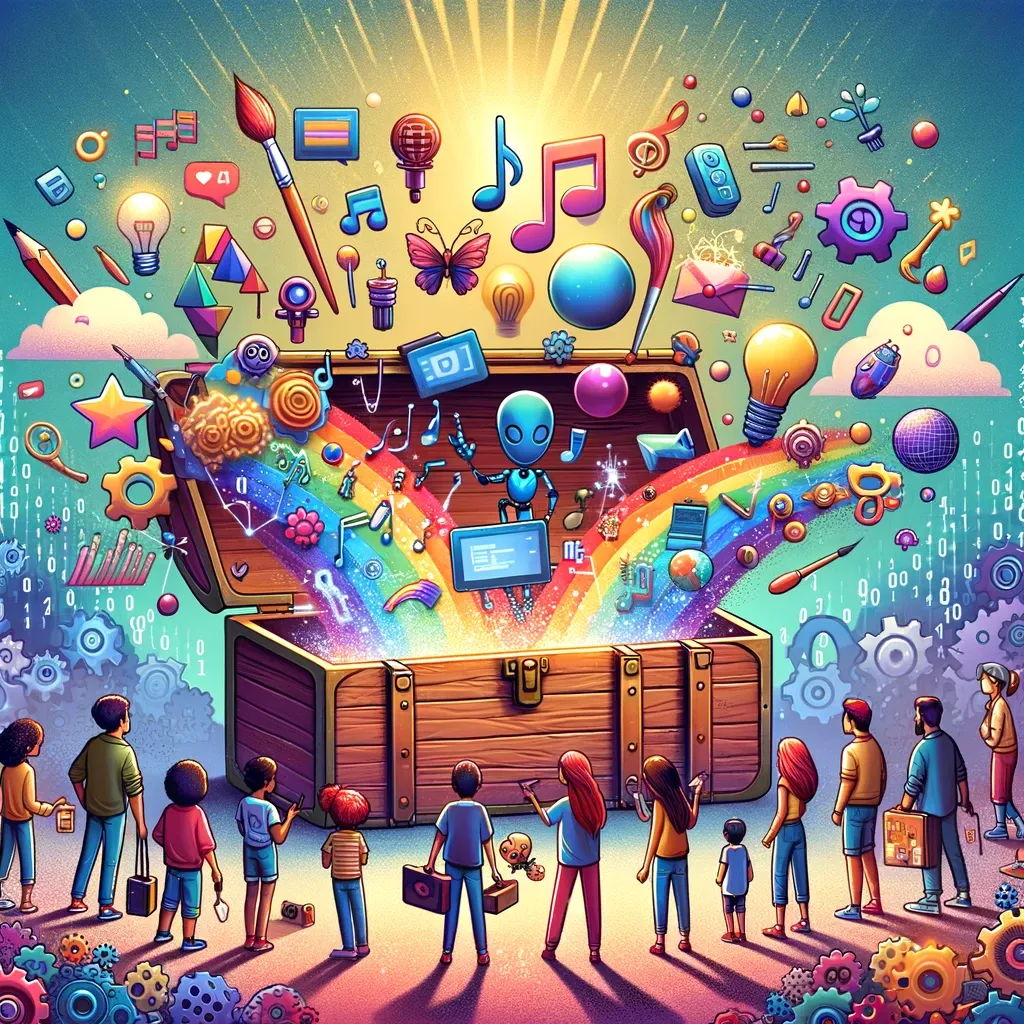Unlocking Creativity with AI: Beyond the Usual Tools
AI is weird and we need to embrace it.

Imagine stepping into a world where your writing assistant doesn't just correct your grammar or find synonyms but inspires realms of creativity you hadn't considered. AI, especially large language models (LLMs), can do just that. Unlike traditional software, AI surprises us, challenges our expectations, and sometimes confounds us with its "weirdness."
Why settle for the ordinary when AI offers a gateway to the extraordinary in writing? From the get-go, let's dive into how AI is not just another tool but a transformative partner for your creative journey.
AI's potential extends far beyond the mundane tasks of grammar correction or synonym searches. Instead of seeing AI as a supercharged autocorrect or a digital thesaurus, envision it as a creative collaborator. It can push the boundaries of what's possible, transforming a paragraph in twenty wildly different ways, from a haiku to an internet meme, illustrating the breadth of creativity AI can unlock.
However, AI's application isn't limited to flamboyant displays of creativity. It's equally potent in more practical domains. Whether drafting a business report, conducting academic research, or crafting engaging social media content, AI can offer insights, suggest improvements, and inspire new approaches that might not be immediately obvious to the human mind.
One common hesitation about integrating AI into the writing process is its perceived complexity or the fear that it might replace human creativity. It's important to understand that AI is a tool meant to augment, not replace, our creative capabilities. By automating tedious aspects of writing, AI frees us to focus on the creative and nuanced parts of our work.
To demystify AI's practical benefits, consider the experience of Jane Doe, a content creator who used AI to revamp her blog posts. With AI's help, she found unique angles for her topics, enhanced her writing style, and doubled her reader engagement. Jane's story illustrates that with a little curiosity and experimentation, AI can significantly elevate the quality and impact of one's writing.
For those new to AI, large language models like GPT (Generative Pre-trained Transformer) are essentially sophisticated algorithms trained on vast amounts of text. They can generate content, offer suggestions, and even simulate conversations based on the patterns they've learned. This capability makes them invaluable partners in the creative process, offering a range of possibilities from generating ideas to refining prose.
To embrace AI in your next writing project, start by experimenting with simple prompts. Ask your AI tool for suggestions on improving a draft, or challenge it to provide creative alternatives to a tired paragraph. Explore features that many AI writing tools offer, such as tone adjustment, style suggestions, and thematic ideas.
In conclusion, by embracing AI's unique capabilities, we open ourselves to a world of creative possibilities that extend far beyond traditional writing aids. AI is not just about automating tasks; it's about unlocking new forms of expression and ideas. As we continue to explore this partnership, we find that the most effective way to harness AI's potential is with an open mind and a willingness to experiment. So, why not let AI be your next creative collaborator? Start small, stay curious, and watch your writing transform in ways you never imagined.